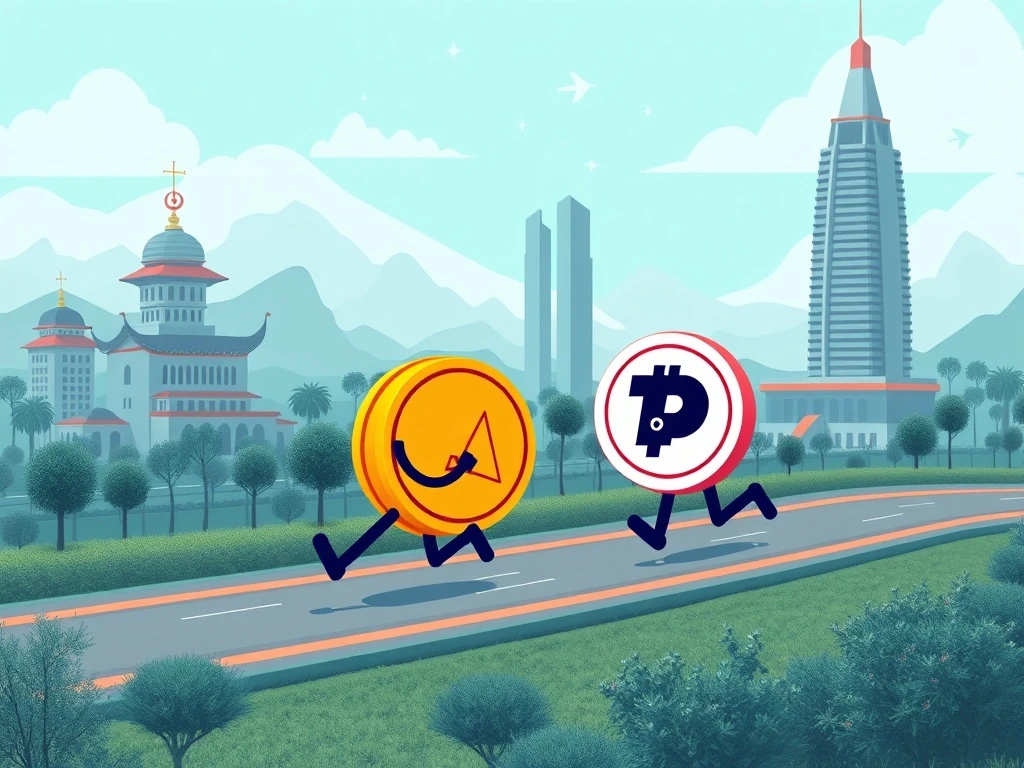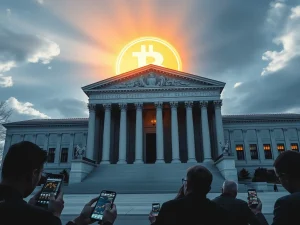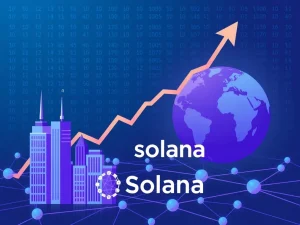Solana Memecoins: LetsBonk’s Astonishing Surge Overthrows Pump.fun in Rankings

The world of Solana memecoins is known for its rapid shifts and intense competition. This week delivered a major surprise as a new player significantly impacted the landscape, challenging the established order.
LetsBonk’s Remarkable Rise in Solana Memecoin Launchpads
A notable change occurred in the Solana memecoin sector. For the first time since its launch, Pump.fun lost its leading position in daily revenue among Solana memecoin launchpads. The new platform, LetsBonk, supported by the Bonk community, achieved this feat.
Data from DefiLlama on July 7 showed that LetsBonk generated $1.04 million in revenue within 24 hours. This figure was double Pump.fun’s revenue of $533,412 during the same period. While this was a significant daily spike for LetsBonk, Pump.fun still maintained dominance on the monthly chart, with over $37 million in protocol revenue.
This surge by LetsBonk also coincided with a positive price movement for the BONK token, which saw a nearly 52% increase in value since the launchpad’s release. BONK remains a prominent Solana memecoin with a large community and a market capitalization of almost $1.8 billion.
Are TradFi and DeFi Converging Sooner Than We Think?
Beyond the memecoin race, the broader financial landscape is also seeing shifts. The convergence between traditional finance (TradFi) and decentralized finance (DeFi) might happen faster than many anticipate.
Nelli Zaltsman, head of blockchain payments innovation at JPMorgan’s Kinexys, shared insights at the RWA Summit Cannes 2025. She indicated that JPMorgan is working to integrate onchain assets with institutional payment systems. This effort points towards a potential acceleration of mass blockchain adoption.
JPMorgan’s approach is described as “asset agnostic,” aiming to provide multichain access for clients as regulatory environments allow. Zaltsman believes the lines between TradFi and DeFi are dissolving due to increased willingness for collaboration from both sides.
Real-World Assets (RWA) Gain Traction in DeFi
The intersection of TradFi and DeFi is particularly evident in the growth of Real-World Assets (RWA). Projective Finance, an RWA financing platform focused on sustainability, launched a $7-million lending pool for public schools in Illinois.
This initiative allows DeFi investors to access municipal infrastructure projects in the United States. The loans funding solar energy installations will be managed entirely onchain. This structure removes traditional intermediaries, offering investors direct access and transparency.
Projective Finance co-founder Josh Chinnaswamy highlighted the transparency enabled by blockchain technology for these investments. The platform provides exposure to government-backed projects, known for their high credit ratings and lower risk profiles, specifically focusing on renewable energy initiatives. The platform itself does not offer exposure to crypto assets.
OpenSea Expands Ambitions Beyond NFTs into DeFi
Major platforms are also evolving. OpenSea, primarily known for NFTs, is strategically expanding its reach. The acquisition of Rally, a mobile and token-focused company, signals OpenSea’s intention to move beyond digital collectibles.
This move supports OpenSea’s goal of developing a mobile-first platform for broader crypto trading, envisioning a future where NFT and token trading is easily accessible on mobile devices. Rally co-founders Chris Maddern and Christine Hall are joining OpenSea’s leadership to contribute their token trading expertise.
Maddern, now OpenSea’s CTO, indicated the team is developing a product aimed at growing the onchain economy for creators and traders, suggesting a potential move towards integrating DeFi elements like perpetuals, as mentioned in the original report.
Security Researchers Thwarted a Major DeFi Backdoor
Amidst innovation, security remains critical in DeFi. Security researchers recently prevented potential losses exceeding $10 million by discovering and securing thousands of smart contracts affected by a backdoor exploit.
The vulnerability, present for months, exploited uninitialized ERC-1967 proxy contracts. This allowed malicious actors to potentially hijack contracts before they were properly set up. Venn Network researcher Deeberiroz shared the discovery, and co-founder Or Dadosh explained that attackers could front-run contract deployments to inject a hidden backdoor.
The security team worked quickly with others in the community to assess affected contracts and secure vulnerable assets after discovering the exploit.
DeFi Market Overview: A Week of Gains
Looking at the broader DeFi market and overall crypto performance, the past week showed positive trends. Most of the top 100 cryptocurrencies by market capitalization ended the week with gains.
Notable performers included MemeCore (M), which saw a massive 1,058% increase, and Hyperlane (HYPER), with over 400% gains. The total value locked (TVL) in DeFi protocols also reflects the overall health and activity in the sector.
Summary: A Dynamic Week in Crypto
This week highlighted the dynamic nature of the crypto space. The intense competition in Solana memecoins saw LetsBonk briefly outperform Pump.fun in daily revenue, signaling potential shifts. Progress continues towards closer ties between TradFi and DeFi, with major institutions exploring onchain solutions and RWA projects providing new investment avenues. Platforms like OpenSea are expanding their focus, while vigilant security efforts remain crucial to protect the ecosystem. Overall, the market showed resilience with many assets posting gains, reflecting ongoing development and activity across various crypto sectors.









